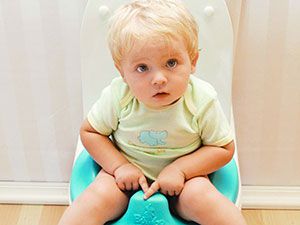Prolapse of the kidney or nephroptosis, can develop at any age, and women more often than men. It can provoke as constitutional peculiarities of a person or congenital anatomical abnormalities, and trauma of the abdomen or lumbar region.
This disease begins gradually, by weakening the supports of the kidney capsule and ligamentous apparatus. Through three stages of prolapse, kidney may be in the pelvic cavity, that negatively affects her the most, and other internal organs.
Each degree of nephroptosis is characterized by certain clinical signs. Taking into account that the patient may suspect the symptoms of the prolapse kidney and timely manner to contact the clinic or medical center.
We will understand more, how does nephroptosis at each stage and in what ways can confirm it.
Signs of a grade 1 pathology
Manifestations of the disease is increasing gradually, with each new inch of prolapse of the kidney organ itself, the urethra and neurovascular bundle are suffering more. Because of the torsion and bending of the ureter the urine cannot pass freely to the bladder, leading to stagnation of urine in the cups and the pelvis of the kidney and its infection. Develops pyelitis, pyelonephritis, over time, formed the hydronephrosis and renal failure.

Displacement from its physiological seat of the renal vessels, their twisting and kinking can become a cause of infringement of blood supply of the organ. Renal tissue begins to receive less nutrients and oxygen, ischemia develops. The impossibility of normal blood flow through the arteries and veins of the kidneys leads to formation of hypertension.
In perirenal adipose tissue starts to progress adhesions resulting from injury unstable kidney to the surrounding connective tissue. Coarse fibrous adhesions and bands make it impossible to return the kidneys to the natural bed and aggravate the degree of nephroptosis.

In the first stage, when all of these pathological processes is just beginning, the symptoms of ptosis of the kidney are minimal or nonexistent. Therefore, diagnosis of 1 degree of the nephroptosis quite difficult, as patients rarely complain. To determine the stage of pathology can be random, at inspection of the patient for other diseases.
In the analysis of urine there are changes only in the second stage of pathology
But still we can note the earliest signs omitted the left or right kidney (nephroptosis bilateral when the symptoms are more pronounced).
The patient may present the following complaints:
- a small pain syndrome or discomfort in the lumbar region, especially after exercise; pain appears in the upright position and subsides in the horizontal;
- a feeling of discomfort or heaviness in the stomach, slight nausea, poor appetite.
At external examination, the expert can palpate (feel) the lower pole began to fall, the buds on the inhale, on the exhale it leaves the lower edge, in the physiological position. In General, the urine at this stage of nephroptosis while there is no characteristic pathological changes, blood pressure is also normal. If the patient to do an ultrasound, it is possible to fix the lower kidney pole 1.5 below the position of the lumbar vertebrae.
Signs of nephroptosis of 2 degrees
With further progression of the pathology increases ischemia of the renal parenchyma, increased stagnation of urine, suffering paranephral tissue, begins to destabilize blood pressure. At this stage the person feels obvious signs of ill health, which forced him to turn to the doctor.

At the reception, he complains:
- expressed quite painful pulling character in the lumbar region or in the abdominal cavity, the pain may “give” under the shoulder blade or in the back; pain syndrome is worse when walking fast or running, coughing or lifting a few subsides, if the patient lies on the back or side from the prolapse of the kidney;
- increase pathological signs from the stomach and intestines, the patient often experiences nausea, develops constipation or diarrhea, appetite firmly reduced;
- bouts of dizziness or headache, associated with instability of blood pressure, and often in a vertical position.
Nausea always accompanies the prolapse of the kidney
At the time of the inspection in the standing position it is possible to determine that the left or the right kidney almost completely out of the hypochondrium. This is accompanied by painful sensations in the lumbar region and stomach area. As soon as the patient lies on the couch, Bud hides under the ribs. Palpation is defined soreness around the lowered body, due to inflammation of the paranephral fatty tissue.
In General, the analysis of urine appear nonspecific changes, indicating problems with the urinary system in General. It is the appearance of protein and red blood cells, associated in particular with the formation of the so-called fornicalia bleeding (release of venous blood through abnormal channels in urinary departments of the kidney, bypassing the filtration system).
Confirm the deletion of the buds of 2 degrees is possible using ultrasound. The location of the lower renal pole 2-3 lumbar vertebra is an absolute criterion for the diagnosis of nephroptosis this stage. It is also advisable to carry out the research functionality of the renal vessels (angiography, Doppler ultrasound), which is necessary for developing a competent medical schemes and determine the prospects for human health.
Symptoms of nephroptosis grade 3
At the last stage of the pathology of the kidney is lowered as low as possible and is in the pelvic cavity. Her ureter twisted and bent in several places, what makes almost impossible the passage of urine. It remains in the pyelocaliceal system and stretches her that soon leads to the annexation of bacterial infection, formation of stones and the terrible complications of nephroptosis: hydronephrosis.

Layering infection in patient with nephroptosis symptoms of intoxication
Significantly disturbed and lowered blood flow to the kidneys. In addition to its ishemizatsii and the beginning of this degenerative process, is the development of resistant hypertension. The rises in blood pressure may exceed 200 mm Hg. article and poorly responding to medical treatment.
The clinical picture of nephroptosis grade 3 rather diverse and is expressed much. Pain syndrome is amplified and is present in any position of the person, radiates to the back, groin area, stomach area. Often the pain felt by the patient to seizures by type of renal colic. Dyspeptic symptoms are supplemented with pain from the stomach and intestines, gall bladder and pancreas. High blood pressure is recorded continuously.
Accession bacterial infection causes the development of pyelonephritis, which, along with signs of dysuria, accompanied by manifestations of intoxication. The patient complains of poor health and insomnia, weakness and fatigue, fever.
By external examination lowered the kidney can be palpated in pelvis where it is continuous and the process can be quite painful due to the presence of inflammation around it. Urine tests reveal significant leukocyturia, erythrocyturia, bacteriuria, the presence of protein. On ultrasound the kidney is determined at 3 or more vertebrae below its natural bed. Other instrumental methods reveal pathological changes as the excretory organ function, and gross pathology on the part of the renal vessels, and signs of damage to adjacent internal organs.
Measurement of blood pressure is an important diagnostic measure with prolapse of the kidney
The success of treatment of ptosis of the kidney is directly related to the degree of severity of disease, its stage, the nature of the causes of disease and predisposing factors. All these factors are taken into account by the physician when prescribing treatment. But the first and main stage is a timely appeal to the specialist. Therefore, any negative manifestations from the urinary system should alert the person and bring him to the doctor’s appointment.




I understand the nuance in this essay, however I would like to read additional insight from you in the future.
Do you have any kind of suggestions for creating write-ups?
That’s where I always battle and also I just end up staring vacant screen for long time.